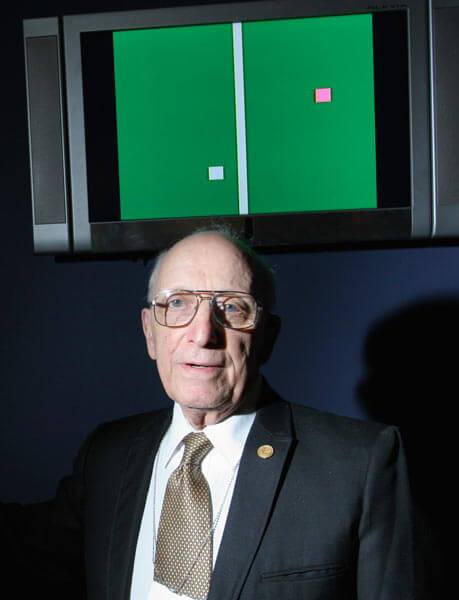By Tammy Scileppi
Home video games are an integral part of our high-tech culture. Take a PlayStation 3 or Xbox 360 away from a kid or teen and they won’t make it through the day. The same holds true for many adults who get hooked on escaping reality.
The evolution and history of these modern-day gizmos was celebrated Oct. 1 at Museum of the Moving Image in Astoria. “Beginnings of Video Games” featured a live video chat with the inventor of the home video game, Ralph Baer, whose unique Brown Box prototype (built 1968-69) was demonstrated. William A. Higginbotham’s 1958 analog computer game, Tennis for Two, was also a hit with visitors.
“For those who think their creativity is the key to success, consider this: Inventing is easy — if that’s the way your brain is wired — doing the necessary product development work successfully is achievable if you have paid your dues and spent years becoming proficient in some area (like consumer electronics development), and if you’ve been putting in the time and effort required to keep learning,” Baer has said. “How do you convert a good idea into a real product that will actually … show up on store shelves? Then comes the big one: How to market your product. That’s the really hard part.
“All of these elements need to be in place for success in the marketplace.”
Baer pioneered microprocessor-controlled, VCR-based interactive video game methods, inventing various systems for nesting data in video signal for real-time interaction between player, VCR-delivered pictorials, and microprocessor-generated action characters on-screen.
Here’s a look back at how the technology Baer created developed over the years:
Summer 1966: Ralph Baer, a German-American engineer, came up with the concept of using a television for playing games, writing a four-page paper describing his plans for simple video games and drawing a block-diagram for a two-player game.
May 1967: Baer played first two-player video game — and lost.
1967-68: Developed first-generation home video games.
Jan. 1968: First patent application filed for video game; demonstrated complete switch-programmable video game unit, capable of playing Ping-Pong, volleyball, football, gun games — using colored, transparent overlays as backgrounds.
1972: Magnavox presented first Odyssey video game to Magnavox dealers in several U.S. locations. Home video games are launched nationwide. Magnavox sold nearly 100,000 Odyssey video games in the United States. First Pong game shows up.
1974-87: Developed advanced video game technology for licensing to industry.
1975-76: Worked on interactive video games for Cable TV with Warner Communications.
1975-82: Invented, developed single-chip, micro-processor-controlled handheld games: SIMON, MANIAC and others. SIMON is still selling, after more than 30 years, since its introduction in 1978.
1978 and on: Developed many novel interactive hardware and software concepts for video games (Instant Replay; drawing of interactive screen-characters; Interactive CD-ROM game, training and simulation technology).
2004-2006: Produced an entire line of functional replicas of experimental video game models, built in the 1960s, and donated to MOMI, one of the first museums in the nation to collect and exhibit video games. The Museum’s core exhibition, “Behind the Screen,” includes a section devoted to arcade- and home-game history. Museum educators conduct demonstrations of the Brown Box twice daily.
2005: Donated all original video game units to the Smithsonian Institution, along with 500-plus pages of related data.
Baer’s inventions spanned 40-plus years and most resulted in products that were put into production. Electronic consumer products, like talking greeting cards (Hallmark) are his idea, as well.



































